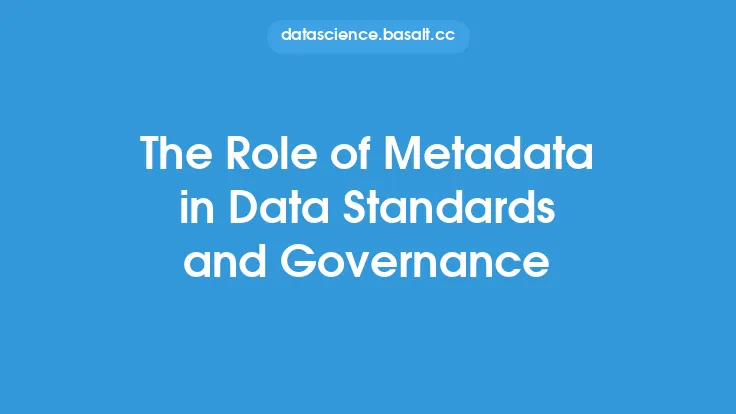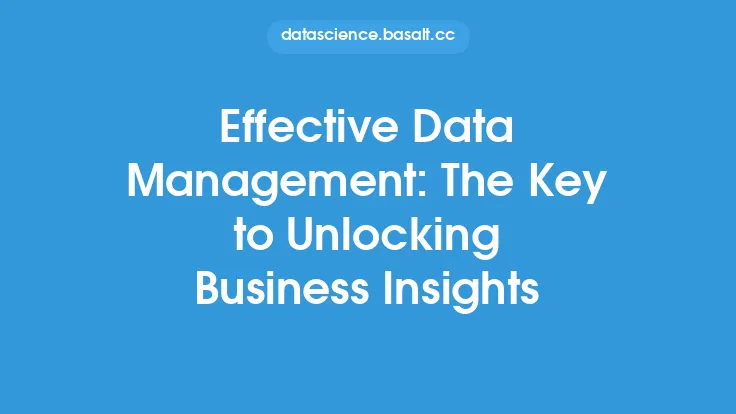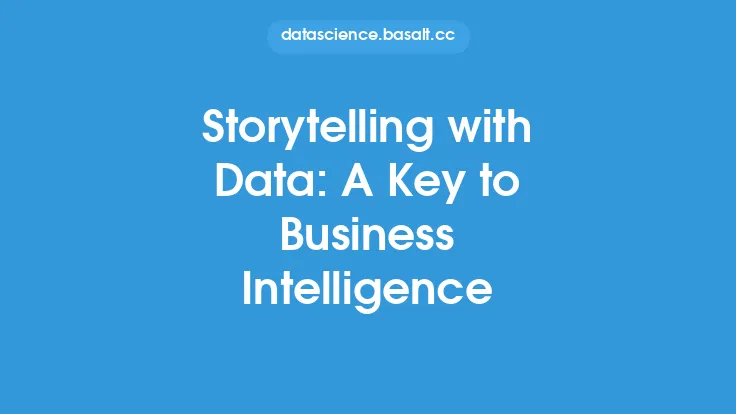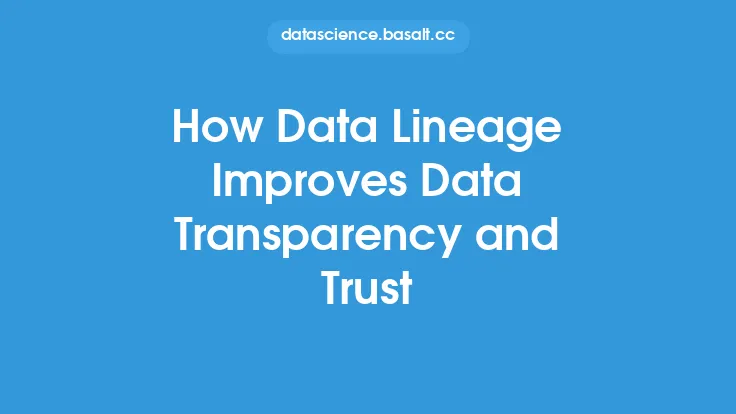In today's data-driven world, organizations are constantly seeking ways to unlock business value from their data assets. With the exponential growth of data, it has become increasingly important to manage and understand the flow of data within an organization. This is where data lineage and metadata management come into play. Data lineage is the process of tracking the origin, movement, and transformation of data across an organization, while metadata management is the process of collecting, storing, and managing metadata, which is data that describes other data. Together, they provide a powerful framework for unlocking business value from data.
Introduction to Data Lineage
Data lineage is a critical component of data quality, as it provides a clear understanding of how data is created, processed, and consumed within an organization. It involves tracking the data flow from its source to its destination, including all the transformations, aggregations, and calculations that occur along the way. By understanding the data lineage, organizations can identify data quality issues, track data provenance, and ensure compliance with regulatory requirements. Data lineage can be applied to various types of data, including structured, semi-structured, and unstructured data.
Benefits of Data Lineage
The benefits of data lineage are numerous. It helps organizations to identify data quality issues, such as data inconsistencies, duplicates, and errors, which can lead to incorrect business decisions. Data lineage also enables organizations to track data provenance, which is essential for ensuring data integrity and authenticity. Additionally, data lineage helps organizations to comply with regulatory requirements, such as GDPR, HIPAA, and CCPA, which mandate the tracking of personal data. By implementing data lineage, organizations can also improve data transparency, trust, and reliability, which are essential for making informed business decisions.
Metadata Management
Metadata management is a critical component of data lineage, as it provides the context and meaning of the data. Metadata is data that describes other data, such as data definitions, data formats, and data relationships. Metadata management involves collecting, storing, and managing metadata, which can be used to understand the data flow, data quality, and data relationships. There are various types of metadata, including descriptive metadata, structural metadata, and administrative metadata. Descriptive metadata provides information about the data, such as data definitions and data formats. Structural metadata provides information about the relationships between data entities, such as data models and data schemas. Administrative metadata provides information about the data management processes, such as data storage, data processing, and data security.
Technical Aspects of Data Lineage and Metadata Management
From a technical perspective, data lineage and metadata management involve various tools and technologies. Data lineage tools, such as data catalogs, data pipelines, and data workflows, are used to track the data flow and data transformations. Metadata management tools, such as metadata repositories, metadata catalogs, and metadata management platforms, are used to collect, store, and manage metadata. Data lineage and metadata management also involve various data standards and protocols, such as JSON, XML, and RDF, which are used to represent and exchange metadata. Additionally, data lineage and metadata management involve various data quality and data governance frameworks, such as data quality metrics, data quality dimensions, and data governance policies, which are used to ensure data quality and compliance.
Implementing Data Lineage and Metadata Management
Implementing data lineage and metadata management requires a structured approach. The first step is to identify the data sources, data destinations, and data transformations, which involves mapping the data flow and data relationships. The next step is to collect and store metadata, which involves using metadata management tools and data standards. The third step is to track data lineage, which involves using data lineage tools and data quality frameworks. The final step is to analyze and visualize data lineage and metadata, which involves using data analytics and data visualization tools. By implementing data lineage and metadata management, organizations can unlock business value from their data assets, improve data quality, and ensure compliance with regulatory requirements.
Best Practices for Data Lineage and Metadata Management
There are various best practices for data lineage and metadata management. The first best practice is to establish a data governance framework, which involves defining data policies, data standards, and data quality metrics. The second best practice is to use data lineage and metadata management tools, which involves selecting tools that meet the organization's needs and requirements. The third best practice is to collect and store metadata, which involves using metadata management tools and data standards. The fourth best practice is to track data lineage, which involves using data lineage tools and data quality frameworks. The final best practice is to analyze and visualize data lineage and metadata, which involves using data analytics and data visualization tools. By following these best practices, organizations can ensure effective data lineage and metadata management, which is essential for unlocking business value from data assets.
Conclusion
In conclusion, data lineage and metadata management are critical components of data quality, as they provide a clear understanding of how data is created, processed, and consumed within an organization. By implementing data lineage and metadata management, organizations can unlock business value from their data assets, improve data quality, and ensure compliance with regulatory requirements. The benefits of data lineage and metadata management are numerous, and the technical aspects involve various tools, technologies, and data standards. By following best practices and using data lineage and metadata management tools, organizations can ensure effective data lineage and metadata management, which is essential for making informed business decisions and driving business success.





